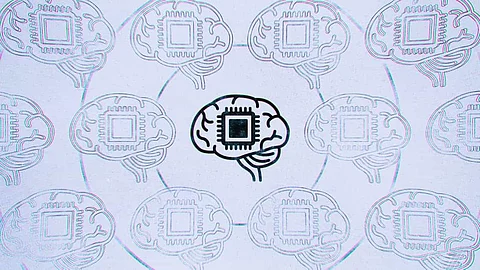

Curiosity Artificial Intelligence also known as curiosity AI, artificial curiosity, AI curiosity, curious algorithm and algorithmic curiosity is the simulation of human curiosity in Artificial intelligence.
If we take humans as an example, curiosity is what makes us learn things. Starting from a stage when humans get maturity, he/she becomes curious about the movements around them and learns from it. Then think about AI getting curious. AI is already known for its features that have reached the cliff by its technological improvements. AI has surpassed human abilities by making predictions and decisions in a split second by going through all the data. When we compare human curiosity with AI curiosity, AI emulates the behaviour in an algorithm that could enhance the potential for self-directed machine learning so that AI system would be driven to seek out or develop solutions to unfamiliar problems.
Functions of curiosity AI
In artificial intelligence, reinforcement learning (RL) is the process of motivating AI to perform desired behaviour and punishing it for undesired ones. RL seeks a feedback signal that assures that AI is making a step closer towards its goal. It learns observation and experience through the process. Training the AI in positive or negative feedback is up to the person who approaches.
RL functions and learns through feedback. It has both flows and flaws as sometimes the feedback gathered is little making it struggle. RL functions are unravelling AI applications in streams like robotic autonomous arms programs that can play a video game better than human champions. This is where curiosity AI comes into the frame. Curiosity AIs main goal is to solve the RL problem. It induces AI to search at places when there is less signal than the usual search making it to think what to do.
RL has made modifications in its algorithm to make AI experience new things and learn from it. Some of the benefits of the changes are,
Changing the algorithm to the above-mentioned way keeps the strangled feedback and differentiates the goal-related feedback. This makes AI focus more on the useful inputs which will enhance its performance. By doing this, AI gets two types of rewards. Both the rewards can also be combined when AI experience new and goal-related observation.
Goal-related observation: A goal-related observation is rewarded when RL algorithm can compare current observation with its stored memory to find the solution.
Novel observation: Novel observation strikes when the AI finds a non-existing environment in its memory.
Curiosity AI is already in the field stealing business automation areas in particular. It is also expected to bring in new improvement in industrial automation and its sub-sectors. Some of the places where curiosity AI is used are,
Comparing the use of AI in the business and industrial sector, AI is widely adopted in business. The reason behind this is that business can afford AI error if it happens while industrial decisions cost a lofty sum. The data that automated devices handle in an industrial setting is far more complicated and harder to process.
Ultimately, Curiosity AI takes a head-on at such places. It is expected that curiosity AI is capable of handling more complex inputs with a consistently high level of success required in the industry. It helps explore uncertainty and explains complex data in a way that narrow AI cannot.
Data centre energy and air conditioning management: Curiosity AI predicts optimal cooling and maintenance time to react to environmental changes. It can also help switch to renewable resources in the data centre by recycling waste heat.
Manufacturing sector: Curiosity AI has the ability to manage and detect failures. It also looks at the root cause of the problem using analysis and suggests potential solutions. These are important tasks in the manufacturing sector as machine failures are often unpredicted which leads to spending too much on replacements.
Data processing and edge computing: To collect complex data, organisations use the Internet of Things (IoT) devices like sensors. Curiosity AI provides flexible and powerful processing tools on that edge-computing.
Join our WhatsApp Channel to get the latest news, exclusives and videos on WhatsApp
_____________
Disclaimer: Analytics Insight does not provide financial advice or guidance. Also note that the cryptocurrencies mentioned/listed on the website could potentially be scams, i.e. designed to induce you to invest financial resources that may be lost forever and not be recoverable once investments are made. You are responsible for conducting your own research (DYOR) before making any investments. Read more here.
